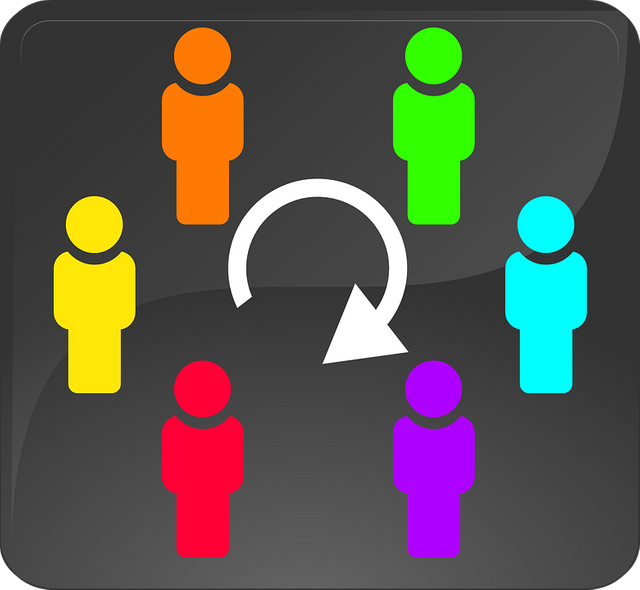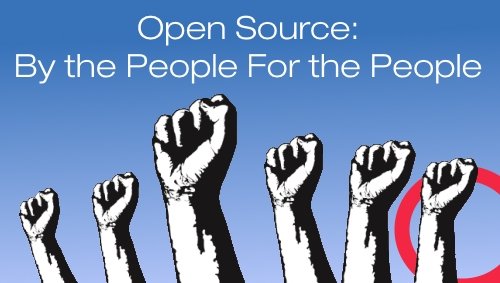Blockchain Technology Has The Ability To Align Stakeholder And User Interests More Effectively Than Any Traditional Company Structure In The Past.
Do we really know what a company could look like if every single user of that service had a vested interest in the success of the company/service as a whole?
The Steemit platform is a great example of this type of aligning interests, and when compared to traditional platforms such as Facebook, the users of Steemit have a much deeper vested interest in the success of the Steemit platform exclusively. Facebook and other traditional platforms would never be able to provide these types of incentives to their users, and is the reason why there is so much community promotion and development in the Steemit community. Being able to make users actually 'care' about using one service over another has always been extremely difficult, but blockchain technology could offer a whole new level of brand or company loyalty. For a great example let's imagine the two biggest ride sharing apps within the US, Lyft and Uber. As an end user, I would have absolutely no preference over which service to use based upon brand, and would simply choose the least expensive and most convenient option. End users don't really care about supporting the company, or even care about the company as a whole, but rather they just care about the quality of the service that the company is able to provide.

Distributing shares of ownership like traditional companies have, always leads to much of the stake and power falling into the hands of a relatively small number of people. The people that traditionally have much of the stake over the company have very different interests compared to the users of the service, which leads to a stakeholders and owners having much different motivations and incentives compared to what the users may prefer. While any user of an application such as Uber could buy stock and acquire ownership stake in the company, the individual still lacks nearly any motivation to collaborate to enhance the platform. Stockholders over traditional companies aren't expected to do any work for the platform, and are rather just taking the risk on the investment and are rewarded based on the companies performance accordingly. While this has always been of great benefit to those small minority of large stakeholders, blockchain technology could enable a whole new type of corporate structure that truly leaves the power to the users of the platform.
Through the introduction of native currencies, platforms can create a completely 'closed-loop' economic system on their platform.
The example of ride sharing applications is great for explaining and highlighting the advantages of blockchain technology, so I will use the example of a ride sharing app once again. Imagine instead of paying drivers through credit or debit cards, riders payed drivers in native currencies on the ride share application. The drivers would then sell these tokens back to the riders and could conduct the whole process without the need any direct interaction with the outside financial system. An internal market could be implemented on this type of platform relatively easily, and could make the exchange between fiat currency and platform native tokens much easier. Instead of a centralized intermediary charging 25% on each transaction, the stakeholders and community as a whole could determine if they wanted to charge fees at all, how much the fees would be, and what the fees would be used for. The ability to pay 'dividends' like a traditional company is possible through blockchain technology, and networks could choose to re-allocate the network fees to holders of the token proportionate to the amount of stake that the individual holds, like Peerplays will do.

The benefits from the decentralized company stricture are huge for end users and investors alike, and the true power of this type of organizational structure has not yet been realized. There has never been a service or platform that has been able to generate the same amount of faith and support by its users like many communities within the cryptocurrency industry, and this could prove to be more powerful than any level of support that centralized services and companies are able to generate. There are little forces that are more powerful than having a large group of highly motivated and dedicated supporters, and blockchain DACs have been able to show that these forces will form on their own if given proper incentive. Everything from worker proposals, to voting on where new network funds should be distributed could have the ability to be set by the stakeholders, presenting a whole new type of ownership and entitlement from stake.
While the adoption of DACs is still likely a bit far off, lets look at some other huge use cases of the technology.
Many in the US are aware of the ongoing debate and issues that are surrounding the healthcare system, but I heard a very interesting proposal put forth by the CEO of Block.one, Brendan Blumer, during his speech at the London Fintech week. Imagine a DAC that operated in the health insurance sector similar to how a credit union operates in the banking sector, where all individuals who 'pay in' to the healthcare plan have the right to have their claims heard/paid by the network should something arise. In the same way that Steem and other Graphene networks elect witnesses and network producers, the same could be done for those individuals who determine which claims are valid and which are not. The exact structure of how the claims would be handles is undetermined, but the individuals determining whether to accept the claim could be the same individuals who present claims themselves.

By removing the desire for profit and drastically increasing efficiency through the streamlining of the process, a DAC health insurance 'company' could prove to cut costs and make the process easier than ever before for individuals. Insurance companies are known to be a pain to deal with and dispute a claim every chance they get, but by utilizing members of the plan as the 'authority', individuals could receive better coverage at a better cost than ever possible before. Obviously incentives would have to be aligned to ensure that voters acted fairly and honorably, but by removing the centralized profit seeking institution costs could be slashed across the board. This is just one example of how a DAC could solve a real world problem that so many people face, but the use cases of this type of technology extend far beyond the examples I have mentioned.
As more platforms capable of hosting applications like DACs come to the market, there will likely be more advancement and development within the space than we have seen in some time. The EOS platform will likely be able to support a wide array of different DACs with different purposes, including everything from a cryptocurrency exchange to a ride-sharing application. Because of the fact that DACs can serve such a wide range of use cases, the ability for different profit and revenue structures is very important as well. For a DAC such as one providing health insurance, a revenue model may be deemed unnecessary, but stakeholders could choose to implement a 1% transaction fee on a ride sharing application and then re-allocate the funds towards community development. The ability for indiviudals and end users to take direct involvement in the ownership of platforms they utilize is a concept that could change the structure of the organization as we have known it.
I really hope that you enjoyed this post, and I encourage you to check out the footage of Brendan Blumer from London's Fintech week here. Please feel free to leave any comments, input, questions, ect. in the comments below. Thanks for the support and for reading!
I sometimes worry about bitcoin at night. There is some comfort in thinking that every night, we are getting closer to the moon.